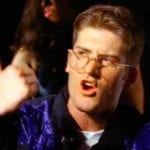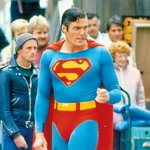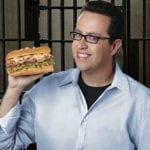 Music
Music  Music
Music  History
History 10 Less Than Jolly Events That Occurred on December 25
 Weird Stuff
Weird Stuff 10 Funny Ways That Researchers Overthink Christmas
 Politics
Politics 10 Political Scandals That Sent Crowds Into the Streets
 Weird Stuff
Weird Stuff Ten Bizarre Facts About The Doge Meme
 Our World
Our World 10 Ways Your Christmas Tree Is More Lit Than You Think
 Movies and TV
Movies and TV The 10 Coolest Stars to Set Sail on The Love Boat
 History
History 10 Things You Didn’t Know About the American National Anthem
 Technology
Technology Top 10 Everyday Tech Buzzwords That Hide a Darker Past
 Humans
Humans 10 Everyday Human Behaviors That Are Actually Survival Instincts
 Music
Music 10 Surprising Origin Stories of Your Favorite Holiday Songs
 History
History 10 Less Than Jolly Events That Occurred on December 25
 Weird Stuff
Weird Stuff 10 Funny Ways That Researchers Overthink Christmas
Who's Behind Listverse?

Jamie Frater
Head Editor
Jamie founded Listverse due to an insatiable desire to share fascinating, obscure, and bizarre facts. He has been a guest speaker on numerous national radio and television stations and is a five time published author.
More About Us Politics
Politics 10 Political Scandals That Sent Crowds Into the Streets
 Weird Stuff
Weird Stuff Ten Bizarre Facts About The Doge Meme
 Our World
Our World 10 Ways Your Christmas Tree Is More Lit Than You Think
 Movies and TV
Movies and TV The 10 Coolest Stars to Set Sail on The Love Boat
 History
History 10 Things You Didn’t Know About the American National Anthem
 Technology
Technology Top 10 Everyday Tech Buzzwords That Hide a Darker Past
 Humans
Humans 10 Everyday Human Behaviors That Are Actually Survival Instincts
Top 10 Tragic One-Hit Wonders
A musician whose single has charted on the Billboard Top 40 without ever repeating that success is deemed a one-hit wonder. More often than not, the sudden rise and subsequent hasty fall leaves irreparable scars on the soul. The following entries focus on the tragic lives of those who fell from grace, be it due to their own vices or simply heartbreaking and unforeseen happenings in life.
10 Tommy Page
“My whole life, I dreamed of having a No. 1 record, ever since I could remember getting into music. I wanted to be on top of the Billboard charts,” said Tommy Page. And so he did in April 1990 with his No. 1 single, “I’ll Be Your Everything.”
In doing so, Page was instrumental in setting the stage for the boy band revolution that few could have foreseen or imagined. Even more implausible was where it all began.
Page was working as a bouncer in a New York nightclub where he inadvertently ran into Seymour Stein, cofounder of Sire Records. Overnight, Page’s life drastically changed for the better, having found himself collaborating and touring with New Kids On The Block.[1]
Despite never repeating the critical acclaim he had received in 1990, Page went on to become a successful businessman. Throughout his short life, he became the vice president of the Village Voice, senior vice president at Cumulus Media, and an executive at Warner Bros. Records. There, he was instrumental in launching the careers of Alanis Morissette, Green Day, Josh Groban, and Michael Buble.
Sadly, Page battled inner demons his entire life. This ultimately led to his suicide at age 46 on March 3, 2017.
9 Ray Smith
Initially a strict country fan, Ray Smith despised the likes of Elvis Presley. As time went on, Smith became increasingly interested in rock music and, ironically enough, found himself idolizing “The King,” who had become his greatest influence.
In 1956, Smith formed his own band, Ray Smith and the Rock & Roll Boys. At first, they performed small gigs around Kentucky. But eventually, they were “discovered,” which led to a contract at Sun Records.
After releasing several singles, Smith found great success with the smash hit “Rockin’ Little Angel,” which peaked at No. 22 in 1960. Following a string of follow-up singles, it was evident that the public had forgotten about Smith and his limelight swiftly faded.
In 1967, Smith and his family moved to Canada, where he went back to his musical roots in country music. Throughout the years, Smith found work in clubs in Ontario, but he never repeated the success he experienced nearly a decade earlier.
Smith’s life came to a tragic end on November 29, 1979, when he committed suicide with a pistol at age 45.[2]
8 Joan Weber
In December 1954, Joan Weber gained national fame with her single “Let Me Go, Lover” which sold over 100,000 copies in the first week alone. Within a month, the song shot to No. 1 on every Billboard chart, eventually earning Weber a gold record and selling over 1 million copies.
Unfortunately for the overnight pop star, her success crashed and burned as quickly as it had risen. After releasing numerous follow-up singles that failed to chart, Weber’s contract with Columbia Records was terminated.
Desperate for money, she began working as a library clerk and was often spotted singing in seedy bars. By 1975, the long-forgotten singer was featured on Casey Kasem’s American Top 40 as the No. 1 Disappearing Act of all time.[3]
Life did not get any easier in Weber’s final years. Ultimately, she was institutionalized in a New Jersey mental asylum where she died in 1981 at age 45.
7 Dorsey Burnette
Dorsey Burnette wrote over 350 songs that have been covered by musical greats such as Stevie Wonder and Glen Campbell. Dorsey began his music career as a member of his brother’s band, the Johnny Burnette Trio.
In an attempt to reconstitute himself as a solo act, Dorsey signed with Imperial Records and, in 1959, released his first and last solo hit, “Tall Oak Tree.” Throughout the next few years, he continued writing and recording until 1964 when his younger brother, Johnny, died in a drowning accident.
Driven by depression and guilt, Dorsey began a downward spiral in which he evaded his sorrows with copious amounts of alcohol and drugs. Over the next 15 years, he was signed to and then terminated by over a dozen labels.[4]
With his musical talents eroded by his calamitous vices, Dorsey performed for anyone who would pay to see him. After years of constant failure and rejection intertwined with drunken fights, chronic alcoholism, and drug abuse, Dorsey died of a heart attack on August 19, 1979, at age 46.
6 Shannon Hoon
Having formed in 1990, Blind Melon was on the fast track to stardom. Prior to their signing with Capitol Records, however, the band was already gaining national attention thanks to lead singer Shannon Hoon’s friendship with Axl Rose. It was their bond that led Hoon to provide backing vocals on various Guns N’ Roses tracks and to appear in their music videos.
Following a successful tour with Soundgarden, Blind Melon went on to release their debut album that spawned the infamous No. 1 hit single, “No Rain.” Shortly after their mainstream success, Hoon’s talent and ambition began to falter as he became increasingly involved with drugs and alcohol. The warning signs of his dire state were evident, which brought into question whether proceeding with the band’s upcoming tour was logical for his well-being.
Despite the recent birth of his daughter as well as an unsuccessful stint in rehab, Hoon and his bandmates hit the road. Weeks later, Hoon was dead. He had been found on his tour bus after overdosing on cocaine. This left Blind Melon without a vocalist and only one hit to their name.[5]
5 Del Shannon
After picking up a guitar at an early age, Del Shannon was bound for stardom. He was signed to Bigtop Records in 1960 and, less than a year later, released his No. 1 hit, “Runaway.” Within two months, Shannon’s hit single was a global smash and remained at the top of the charts for four consecutive weeks.
Ironically, Shannon’s career was overshadowed by The Beatles, one of the many bands that had admired his fresh rock-and-roll style. Despite a fizzling music career, he went on to produce many unknown talents. This included Bob Seger, an artist who landed his first record deal with Shannon’s assistance.
In the late 1980s, Tom Petty helped Shannon reenter the studio with the Heartbreakers as his backup band.[6] Sadly, the album was never completed after Shannon’s sudden and unexpected suicide in February 1990.
Having suffered from alcoholism and depression for years, Shannon was prescribed the antidepressant Prozac shortly before shooting himself in the head with a .22 caliber rifle.
His widow filed a high-profile lawsuit against the drug’s manufacturer. Although her suit was eventually dropped, the case was one of the first to bring attention to a possible link between SSRIs and suicide ideation.
4 Rob Pilatus
Just one year after Milli Vanilli formed, Rob Pilatus and Fab Morvan won a Grammy for Best New Artist for their infamous debut album, Girl You Know It’s True. By that time, suspicions had been circulating that the duo had mimed their hits, a rumor which proved true in July 1989. While performing on live TV, their hit single began to skip. This led to the duo’s subsequent confession and the retraction of their Grammy.
In 1993, the disgraced Pilatus and Morvan attempted a redemption album, Rob & Fab. The album failed miserably, and the duo went their separate ways. While Morvan moved on with his life—subsequently becoming sober—Pilatus embarked on an agonizing downward spiral that included multiple suicide attempts and various felony charges, including grand theft.
On April 2, 1998, Pilatus’s lifeless body was found in a Frankfurt hotel room after he ingested a fatal concoction of alcohol and pills. He was 33 years old.[7]
3 Walter Scott
In 1966, Bob Kuban and The In-Men appeared on American Bandstand performing their hit single “The Cheater” with Walter Scott singing lead. Although the band was in the initial stages of success, Scott quit the group to pursue a solo career.
Due to this fateful decision, Scott never topped the Billboard charts again and spent the next 17 years fronting cover bands that performed at street fairs and weddings. Suffice it to say, Scott was enthusiastic when he signed on with his old bandmates for a reunion concert in 1983. But he suddenly and inexplicably disappeared shortly after.
Four years would pass until Scott’s remains—bound at the knees, ankles, and wrists and shot once in the heart—were discovered floating in a cistern on the property of Jim Williams.[8]
Eerily reminiscent of his hit lyrics, “Look out for the cheater,” Scott’s widow, Joann, had married Williams soon after the singer vanished. In addition, Williams’s first wife had also died under suspicious circumstances merely two months before Scott’s disappearance.
In the end, Joann Scott Williams and Jim Williams were charged in both murders. Jim Williams was sentenced to life in prison, where he died in 2011. Joann agreed to plead guilty to hindering the prosecution, and murder charges against her were dropped. She was paroled in February 1994, less than a year after entering prison.
2 Minnie Riperton
With an angelic five-octave vocal range, Minnie Riperton began her solo career in 1970 with the release of her debut album, Come to My Garden. Despite her unique and eloquently beautiful voice, the record failed to gain commercial success. It would be another four years until she released a second album.
With the help of Stevie Wonder coproducing Perfect Angel in 1974, Riperton found her greatest and only hit with the pop ballad, “Lovin’ You.” Overnight, Riperton was a household name in spite of her successive yet failed attempts to land on the Billboard Top 40.
Riperton’s self-titled album, Minnie, which was released in 1979, would unfortunately be her last. After having been diagnosed with breast cancer three years earlier, Riperton underwent a mastectomy and became an advocate for the American Cancer Society.
She earned the praise of then-President Jimmy Carter, who awarded her the Society Courage Award. All the while, she continued to record and perform despite her terminal diagnosis.[9] Sadly, Minnie Riperton lost her battle at age 31 on July 12, 1979.
1 Jimi Hendrix
To the surprise of many rock-and-roll fans, Jimi Hendrix was indisputably a one-hit wonder given the fact that his rendition of Bob Dylan’s “All Along the Watchtower” was his only Top 40 hit. Nonetheless, the song would go on to cement Hendrix’s place in rock history. It is often regarded as one of the greatest and most popular covers of all time.[10]
Bob Dylan himself even considers Hendrix’s version as superior to the original, describing how he was initially overwhelmed the first time he heard the mesmerizing adaptation.
It is a mystery as to what could have been for the troubled Hendrix and whether he would have scaled the Billboard charts once again if not for his untimely death at age 27. Perhaps what’s more questionable are the bizarre and various theories surrounding his passing.
Hendrix, who was found dead from an apparent asphyxiation, was said to have consumed a large quantity of sleeping pills and red wine the previous night. However, numerous theories continue to circulate, ranging from an accidental overdose to suicide and even murder.
Although the cause of his death may always remain a matter of debate, Jimi Hendrix is irrefutably one of the greatest guitarists rock and roll has ever seen.
Adam is just a hubcap trying to hold on in the fast lane.
Read more tragic stories about musicians on 10 Tragic Facts About Legendary Musicians and Top 10 Musician Plane Crash Deaths.








